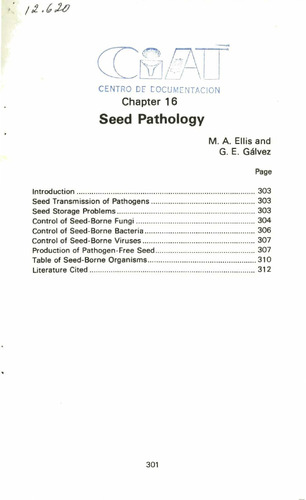Seed pathology
Seeds provide an efficient method for disseminating pathogenic organisms to different locations; more than 50 percent of the major bean diseases are seed borne. Mechanical damage, which may occur during harvesting, threshing and/or planting, can affect seed viability, germination and contamination by microorganisms. Seed pathogens can be controlled with protectant fungicides that penetrate the seed coat but not the cotyledons. Systemic fungicides, which penetrate that seed coat and cotyledons, provide some degree of control. The date of harvest is very important in the production of high-quality, pathogen-free seed. Leaving plants for prolonged periods in the field after plant maturity increases the percentage of seed infection by fungi and decreases the percentage of seed germination. Various species of bacteria and viruses are seed borne, but no treatment controls them satisfactorily. The seed-borne and seed-contaminating organisms associated with dry beans are given in table form. Color illustrations are given. (AS)

